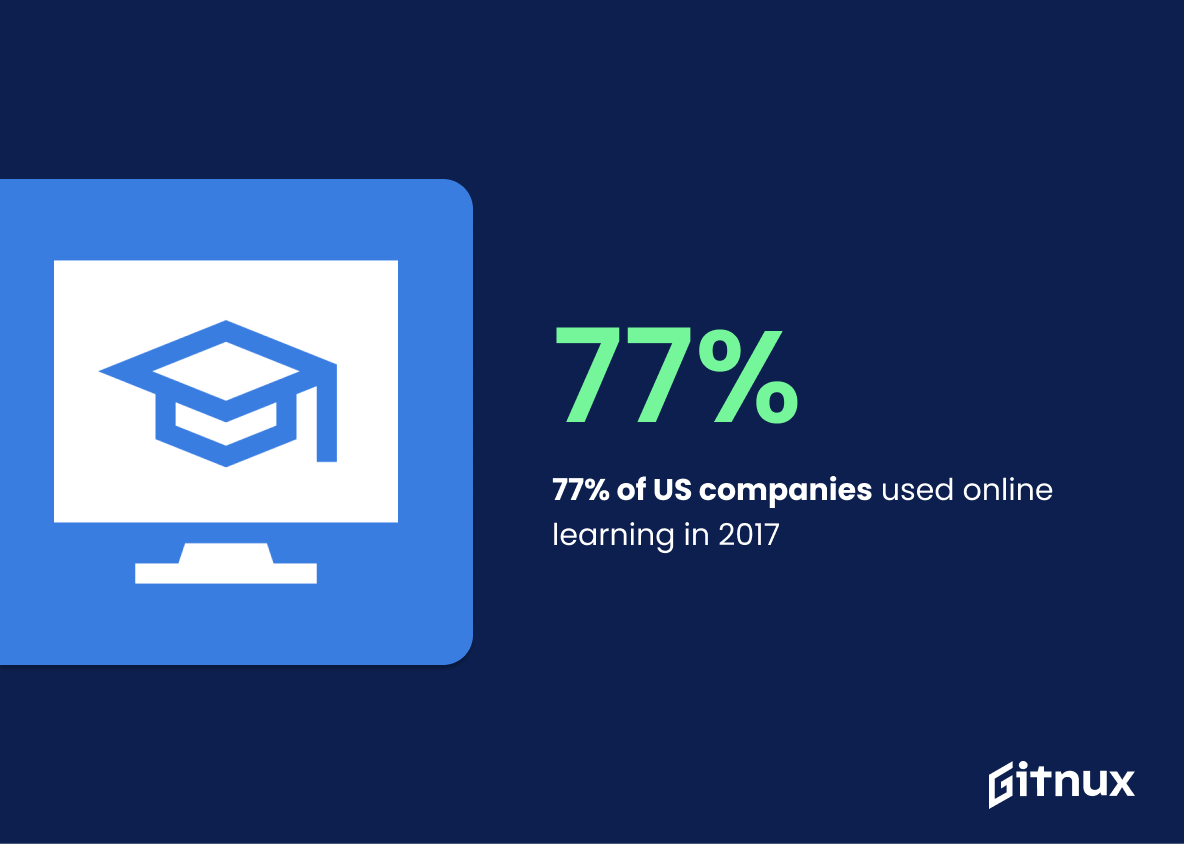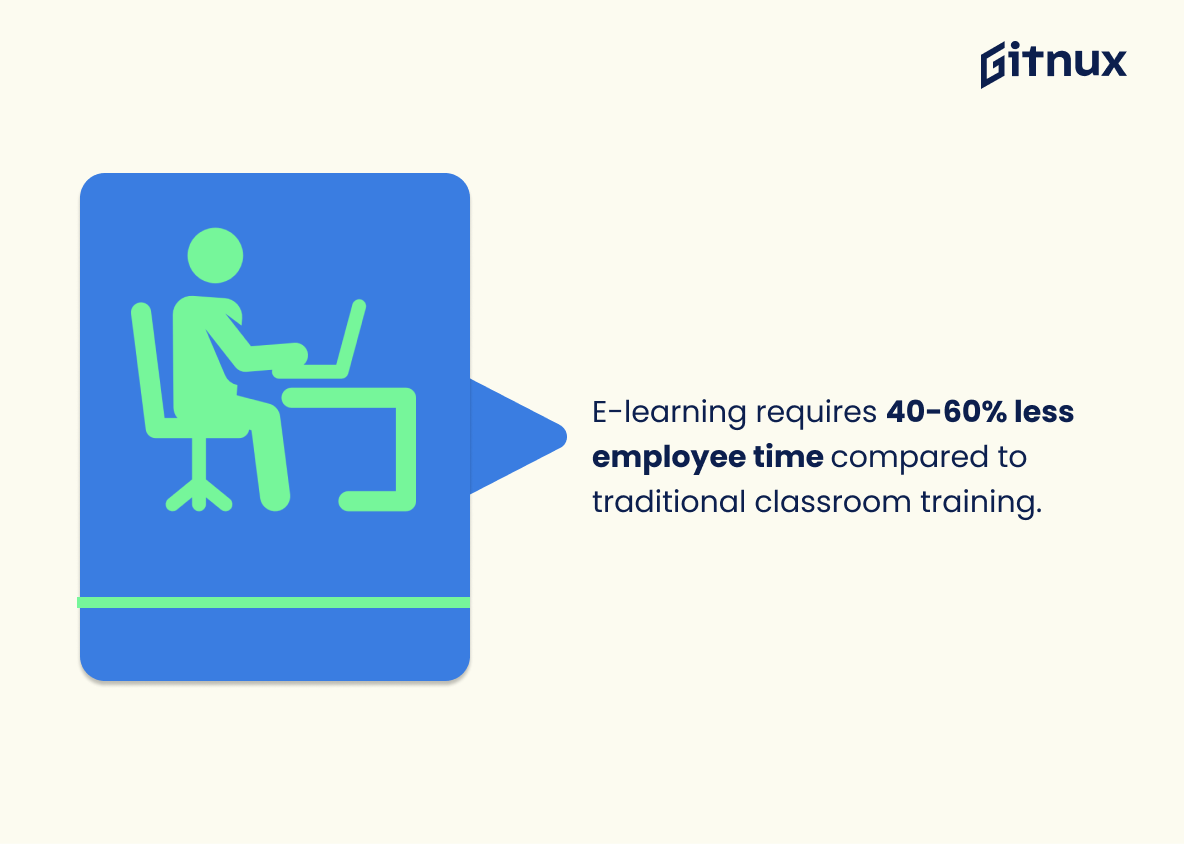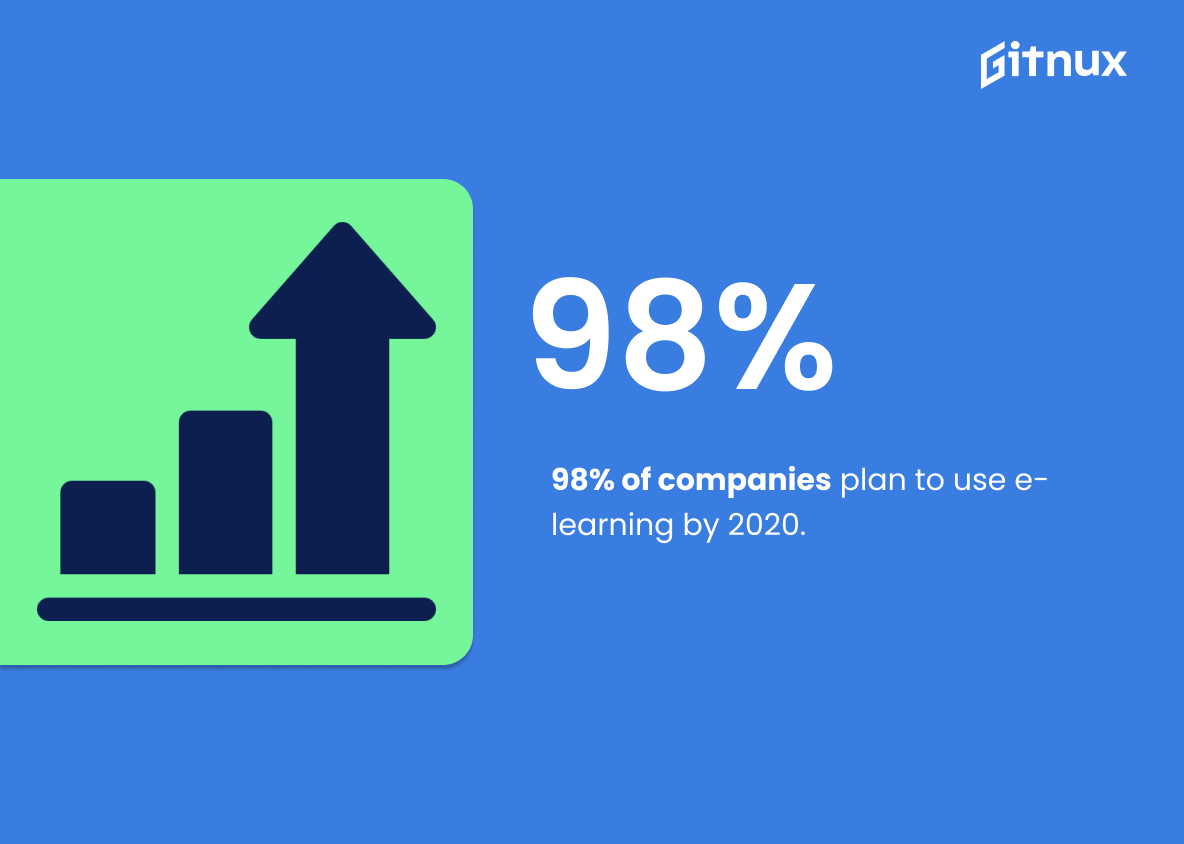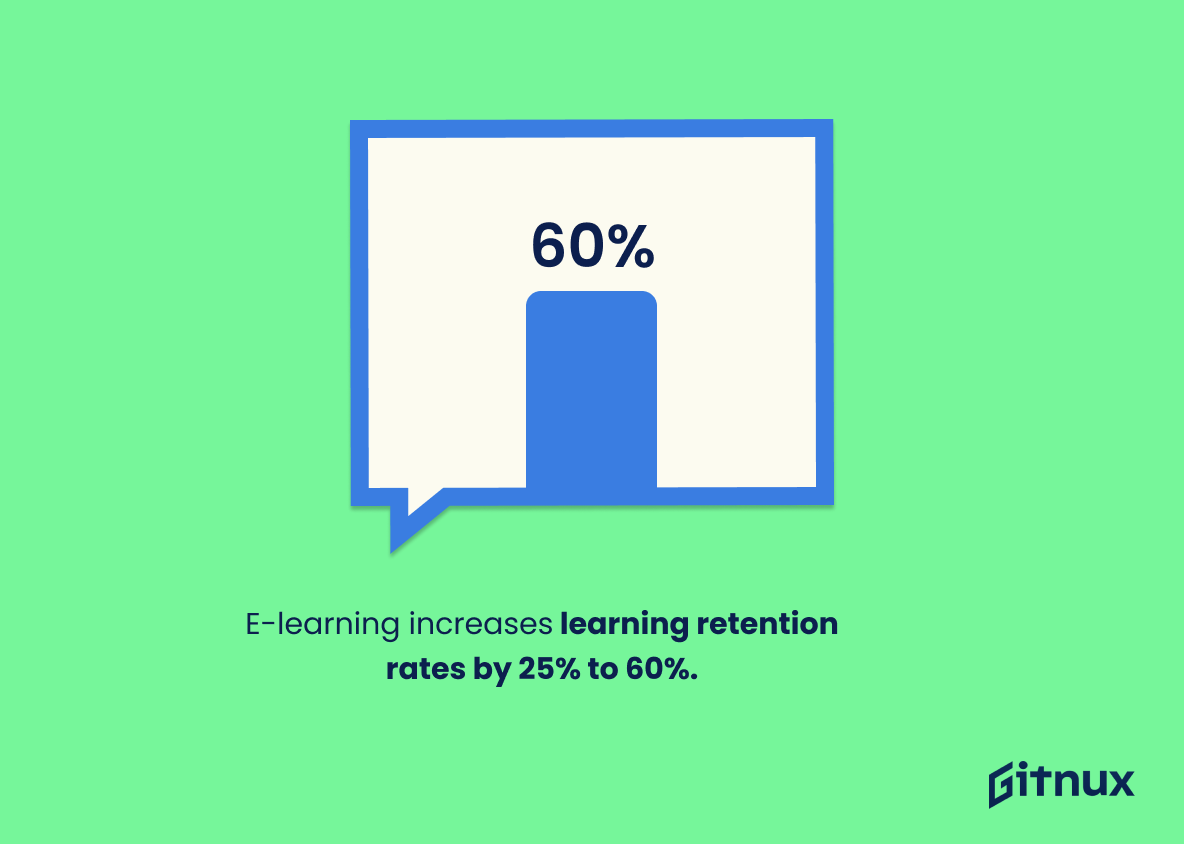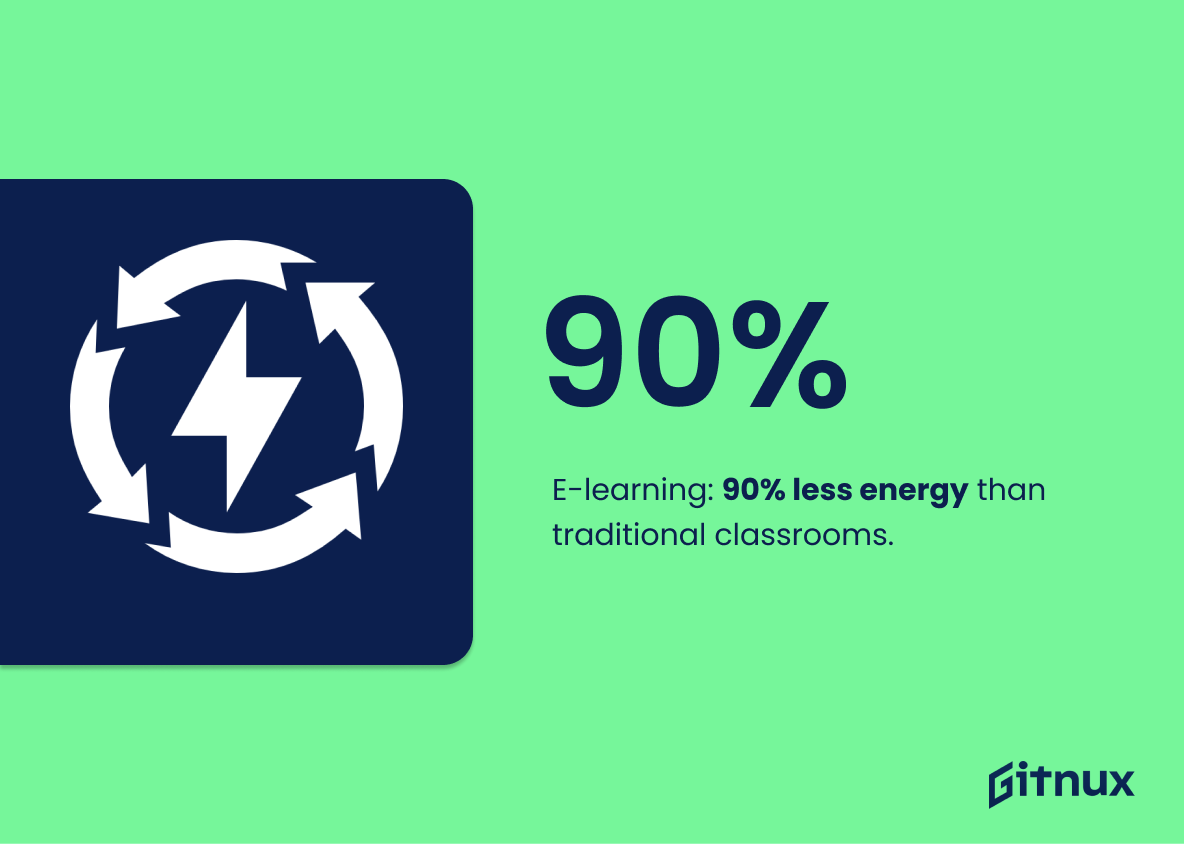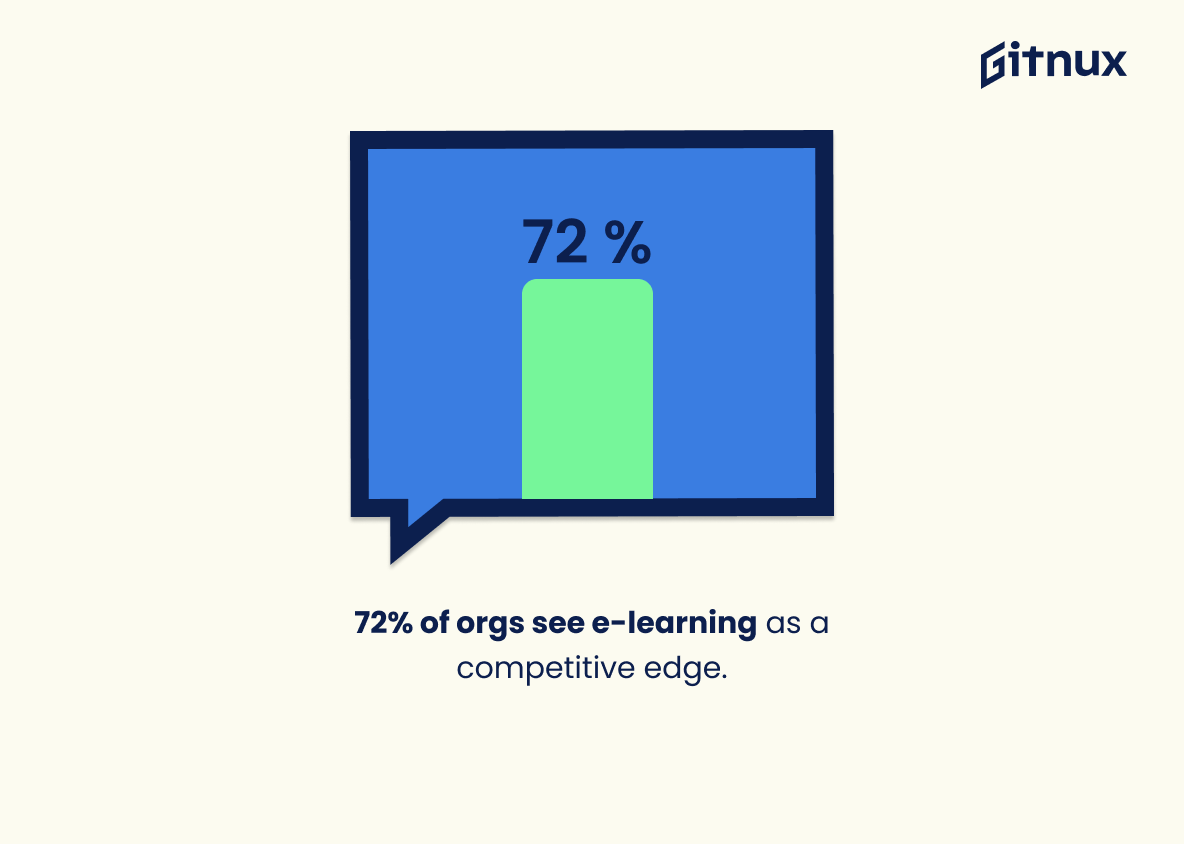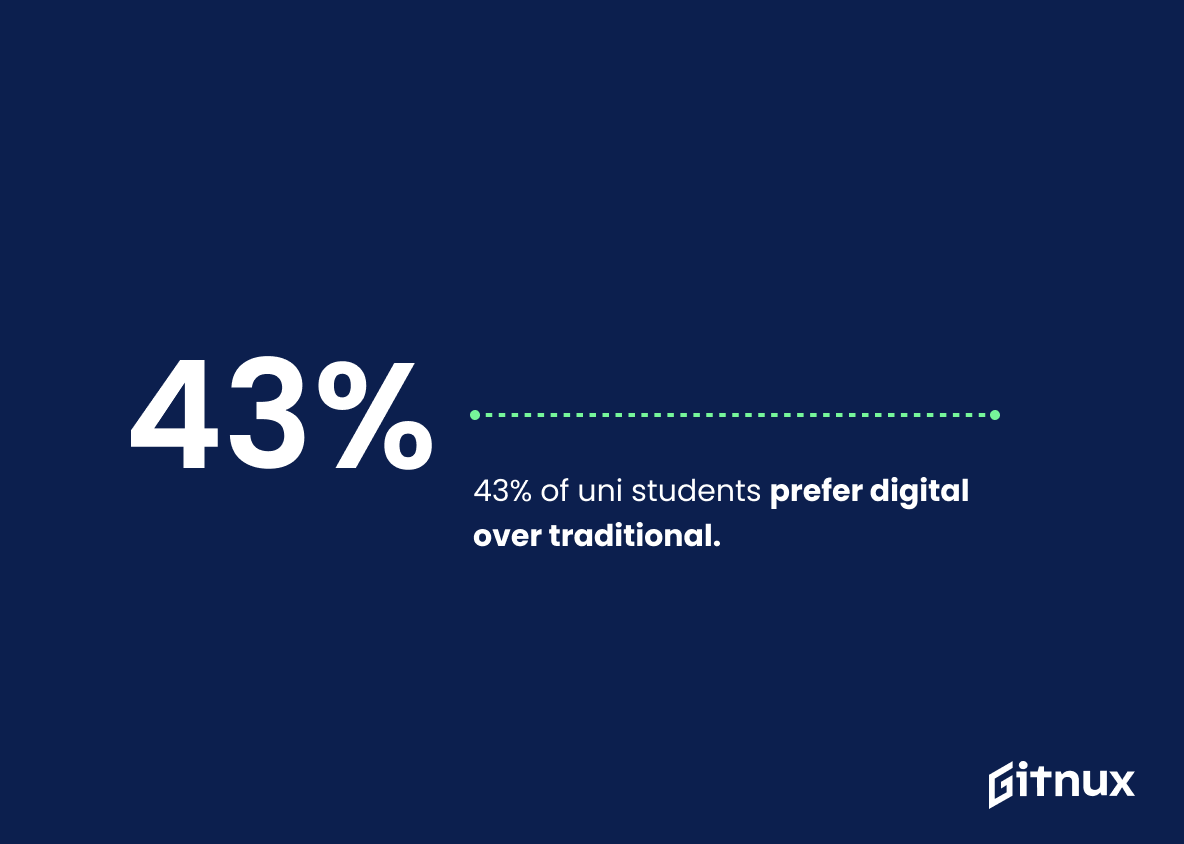E-learning has become an increasingly popular way to learn, with the global e-learning market projected to reach $336.98 billion by 2026 and 50% of all corporate training expenditures directed toward online learning by 2025. This trend is driven in part by the many benefits that come from using e-learning platforms, such as increased revenue for companies (42%), reduced employee time spent on traditional classroom training (40%-60%) and improved grades for college students (81%). In this blog post we will explore some of these statistics further, looking at how much money is being invested in e-learning across different sectors, what impact it’s having on student performance and retention rates, as well as its environmental advantages over traditional classroom courses.
This statistic is a testament to the growing popularity of e-learning, indicating that it is becoming an increasingly important part of the educational landscape. It shows that e-learning is becoming a viable option for many people, and that the market is growing rapidly. This is an important point to consider when discussing e-learning statistics, as it demonstrates the potential for e-learning to become a major part of the educational system.
By 2025, 50% of all corporate training expenditures will be directed toward online learning.
This statistic is a clear indication of the growing importance of e-learning in the corporate world. It shows that companies are increasingly recognizing the value of online learning and are willing to invest in it. This is a strong signal that e-learning is here to stay and will continue to be a major part of corporate training in the future.
E Learning Statistics Overview
77% of US companies used online learning in 2017.
This statistic is a powerful indicator of the growing prevalence of e-learning in the US. It shows that the majority of companies are now taking advantage of the convenience and cost-effectiveness of online learning, and that e-learning is becoming an increasingly important part of the corporate landscape. This statistic is a clear sign that e-learning is here to stay and is becoming an increasingly important part of the corporate world.
In 2019, the global e-learning market was valued at $200 billion.
This statistic is a testament to the immense growth of the e-learning market in recent years. It highlights the fact that e-learning has become an increasingly popular and profitable industry, with a value of $200 billion in 2019. This is a clear indication that e-learning is here to stay and is likely to continue to grow in the future.
42% of companies say that e-learning has led to increased revenue.
This statistic is a powerful testament to the effectiveness of e-learning. It shows that a significant portion of companies have seen a direct benefit from investing in e-learning, in the form of increased revenue. This is an important indicator that e-learning is a worthwhile investment for businesses, and can be a great way to boost profits.
E-learning requires 40-60% less employee time compared to traditional classroom training.
This statistic is a powerful testament to the efficiency of e-learning. It demonstrates that e-learning can provide the same level of training in a fraction of the time, making it an attractive option for businesses looking to save time and money. This statistic is especially relevant in a blog post about e-learning statistics, as it highlights the potential cost savings that can be achieved by switching to e-learning.
The mobile e-learning market is expected to reach $37.6 billion by 2020.
This statistic is a testament to the growing popularity of mobile e-learning. It shows that more and more people are turning to this form of learning, and that the market is expected to continue to expand in the coming years. This is an important indicator of the potential for e-learning to become a major part of the educational landscape in the near future.
98% of companies plan to use e-learning by 2020.
This statistic is a powerful indicator of the growing popularity of e-learning. It shows that the majority of companies recognize the potential of e-learning and are actively investing in it. This statistic is a testament to the fact that e-learning is becoming an increasingly important part of the modern workplace. It is a clear sign that e-learning is here to stay and that companies are taking it seriously.
E-learning increases learning retention rates by 25% to 60%.
This statistic is a powerful testament to the effectiveness of e-learning. It demonstrates that e-learning can be a powerful tool for improving learning retention rates, with the potential to increase them by up to 60%. This is an invaluable insight for anyone considering using e-learning as part of their educational strategy.
US e-learning investment grew by 900% between 2001 and 2017.
This statistic is a testament to the incredible growth of e-learning over the past two decades. It shows that investment in this area has skyrocketed, indicating that more and more people are recognizing the potential of e-learning and investing in it. This is a clear sign that e-learning is becoming an increasingly important part of the educational landscape, and it is likely to continue to grow in the future.
81% of college students found that digital learning technology was helpful in improving their grades.
This statistic is a powerful testament to the effectiveness of digital learning technology in helping college students improve their grades. It shows that the majority of students who have used this technology have seen positive results, making it a valuable tool for those looking to get ahead in their studies. This statistic is an important reminder that E Learning can be a powerful asset in the classroom.
In 2017, almost 6 million students in the United States took at least one online course.
This statistic is a testament to the growing popularity of e-learning. It shows that more and more students are turning to online courses to gain knowledge and skills, which is a clear indication that e-learning is becoming an increasingly viable option for students. This statistic is a powerful reminder that e-learning is here to stay and is becoming an increasingly important part of the educational landscape.
E-learning is eco-friendly, using 90% less energy than traditional classroom courses.
This statistic is a powerful reminder of the environmental benefits of e-learning. By using 90% less energy than traditional classroom courses, e-learning is a great way to reduce our carbon footprint and help protect the planet. This is an important factor to consider when discussing the advantages of e-learning.
72% of organizations believe that e-learning helps them gain a competitive advantage.
This statistic is a powerful indicator of the potential of e-learning to give organizations a competitive edge. It shows that the majority of organizations recognize the value of e-learning and are investing in it to gain an advantage over their competitors. This statistic is a testament to the effectiveness of e-learning and its ability to help organizations stay ahead of the competition.
The average interaction time for traditional classroom learning is 2-3 hours, while for e-learning, it is reduced to around 30 minutes.
This statistic speaks volumes about the effectiveness of e-learning compared to traditional classroom learning. It shows that e-learning is able to deliver the same amount of information in a fraction of the time, making it a much more efficient and cost-effective way to learn. This makes e-learning an attractive option for those who are looking to save time and money while still getting the same quality of education.
43% of university students found digital learning more effective than traditional classroom learning.
This statistic is a powerful indicator of the effectiveness of digital learning, demonstrating that a significant portion of university students find it to be a more effective form of learning than traditional classroom learning. This is an important piece of information to consider when discussing the merits of e-learning, as it provides evidence that digital learning can be a viable and successful alternative to traditional classroom learning.
By 2025, the e-learning industry in India is predicted to reach a value of $5.7 billion.
This statistic is a testament to the immense potential of the e-learning industry in India. It shows that the industry is expected to experience tremendous growth in the coming years, making it an attractive option for businesses and individuals alike. With such a large market size, the e-learning industry in India is sure to become a major player in the global education landscape.
In 2019, K-12 schools in the United States spent over $6 billion on educational technology.
This statistic is a powerful indicator of the growing importance of educational technology in K-12 schools across the United States. It demonstrates that schools are investing heavily in technology to improve the learning experience for students, and that they are recognizing the potential of e-learning to enhance the educational process. This statistic is a clear sign that e-learning is becoming an increasingly important part of the educational landscape in the US.
Conclusion
The statistics presented in this blog post demonstrate the growing importance of e-learning across a variety of industries and sectors. From corporate training to K-12 education, businesses and institutions are increasingly turning to digital learning solutions as an effective way to improve employee performance, increase revenue, reduce costs, and gain competitive advantages. The global e-learning market is projected to reach $336.98 billion by 2026 while mobile e-learning is expected to reach $37.6 billion by 2020; these figures highlight the potential for growth within this sector over the coming years. With its ability to save time and energy while improving student engagement levels and retention rates, it’s clear that e-learning will continue playing an important role in our educational systems going forward.
References
0. – https://www.learn.g2.com
1. – https://www.pearson.com
2. – https://www.statista.com
3. – https://www.smallbizgenius.net
4. – https://www.edtechmagazine.com
5. – https://www.iholland.co.uk
6. – https://www.shiftelearning.com
7. – https://www.technewsrprt.com
8. – https://www.files.eric.ed.gov
9. – https://www.trainingmag.com
10. – https://www.skillcast.com
11. – https://www.humber.ca
12. – https://www.researchandmarkets.com
13. – https://www.trainingindustry.com
14. – https://www.globenewswire.com
ZipDo, cited June 2023: E Learning Statistics
